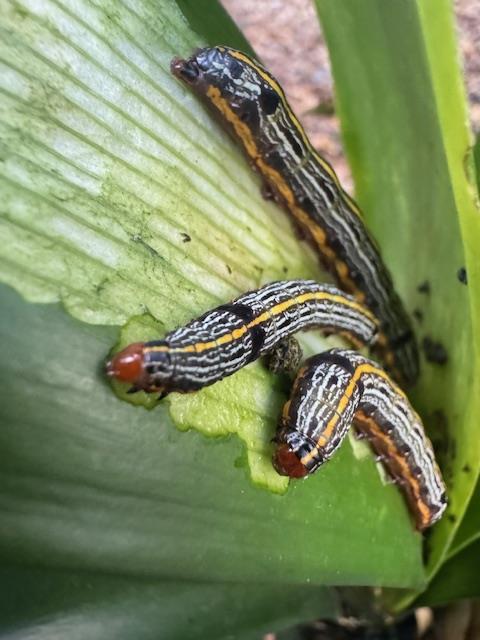
Clivia and Lily Carnage! East Coast under Siege by The Lily Caterpillar!
Australia’s East Coast gardeners are facing a green-thumbed nightmare: Lily Caterpillars (Spodoptera picta) are sweeping through gardens and decimating beloved plants like Clivias and Crinums at shocking speed. If you're growing anything in the lily family, act fast because this native pest shows no mercy.
WHAT’S BEING ATTACKED?
This aggressive caterpillar infestation is targeting:
- Clivia - all 6 known species including Clivia miniata (Natal lily) and Clivia nobilis (Forest lily)
- Crinum pedunculatum - also known as Swamp Lily or River Lily
- Hippeastrums, Spider Lilies (Hymenocallis), and other members of the Amaryllidaceae and Liliaceae families
Your vibrant, sculptural clumps of Clivia and other striking lilies are at serious risk of complete destruction and gardeners are reporting damage overnight.
MEET THE ENEMY: SPODOPTERA PICTA – THE LILY CATERPILLAR
The Lily Caterpillar is the larval form of a red and cream moth that lays eggs in clusters on plant leaves. These caterpillars are unmistakable: 5cm long, black and grey with eye-like dots, and distinct yellow stripes that become more prominent as they mature.
They hide during the day and come out to feed ravenously at night, skeletonizing leaves, destroying foliage, and chewing into plant crowns. Left untreated, entire plantings die or are left severely deformed.
HOW TO GET RID OF THEM (FAST!)
Your best bet? Act immediately with a Biological Insecticide containing DiPel® (Bacillus thuringiensis subsp. kurstaki).
WHY DiPel?
✅ Environmentally safe – Won’t harm bees, pets, or beneficial insects
✅ Targets caterpillars only – No collateral damage to your garden ecosystem
✅ Fast action – Caterpillars stop feeding almost immediately after ingesting the sprayed foliage
✅ Organic gardening approved
🛒 Product example:
OCP Eco-Caterpillar Killer (Bunnings)
After spraying, plants develop a light grey coating. Once caterpillars consume the treated area, they swell and die fast. This is nature-backed, no-nonsense protection.
IMPORTANT: Products containing DiPel shouldn’t be stored after mixing, as their effectiveness decreases. Only prepare the amount you need and use it immediately.
Don’t forget to reapply every 5–7 days, or after rain, to maintain protection.
ORGANIC & HANDS-ON OPTIONS
Prefer chemical-free control?
- Inspect early morning – When caterpillars are still visible
- Remove by hand – (Gloves recommended!) Squash or drop into soapy water
- Spray with eco-neem or eco-caterpillar killer – Slows feeding and kills within days
- Trim & treat – Cut away damaged leaves and feed your plant with seaweed tonic to aid recovery
THE BIGGER PROBLEM
This year’s outbreak is worse than ever before. As mass plantings of Clivias and Crinums rise in popularity, so does the caterpillar population. Their lifecycle allows for multiple generations per year, especially during warm, wet, or humid conditions common across coastal NSW and QLD.
If left unchecked, you’ll be left with:
- Ugly, skeletonized plants
- Piles of black droppings
- Weak regrowth or total plant death
A QUICK WORD ON DiPel® – WHAT’S IN A NAME?
DiPel gets its name from “Lepid” (from Lepidoptera - the insect order containing moths and butterflies), spelled backwards. It’s a trusted brand with global use and zero known cross-resistance - a rare strength in pest control today.
FINAL CARE TIP
Once you’ve cleared the caterpillars, don’t forget to:
- Feed weekly with eco-seaweed and eco-aminogro
- Remove any fungus-prone damaged leaves
- Inspect weekly during warm seasons
📢 Protect your lilies now—don’t wait until it's too late!

